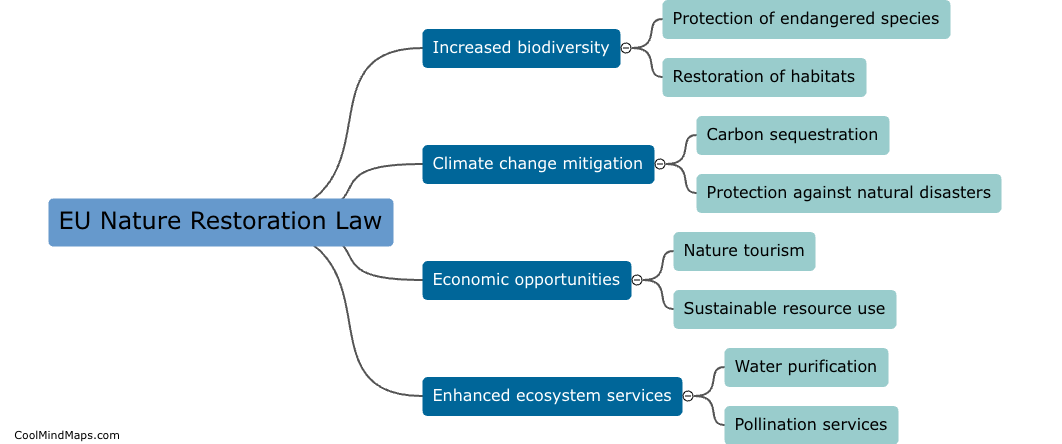What are the potential benefits of the EU Nature restoration Law?
The EU Nature Restoration Law, proposed by the European Commission in 2020, holds significant potential benefits for the environment and society as a whole. The law aims to restore damaged ecosystems across Europe, with a particular focus on forests, wetlands, and grasslands, by setting binding targets for restoration and providing necessary financial support. By actively restoring these habitats, the law is expected to improve biodiversity, enhance wildlife conservation, and mitigate the impacts of climate change. Additionally, the restoration of ecosystems can promote natural carbon sequestration, improving air and water quality, and providing new recreational opportunities for local communities. Ultimately, the EU Nature Restoration Law represents a major step towards preserving Europe's natural heritage and ensuring a sustainable future for generations to come.

This mind map was published on 3 October 2023 and has been viewed 92 times.











